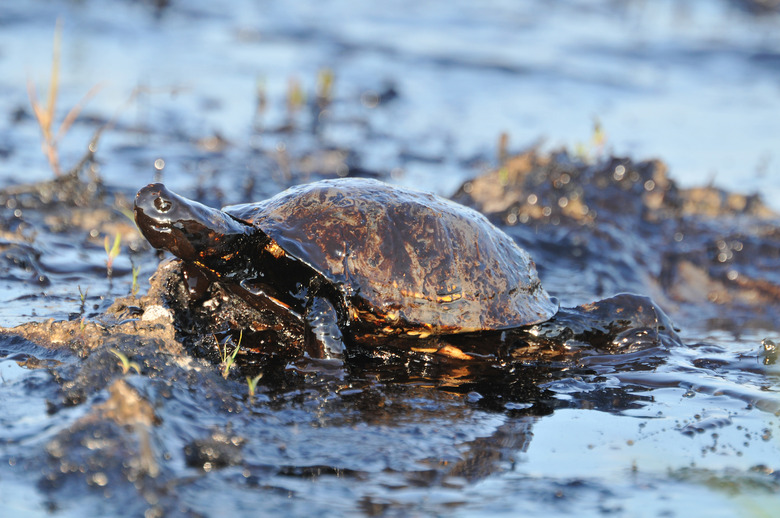Effects Of Hydrocarbons On The Environment
Let's face it: the planet's atmosphere and climate have been changing for decades, and hydrocarbons are one of main culprits. These are a class of compounds primarily composed of carbon and hydrogen. As major components of oil, natural gas and pesticides, these substances contribute to the greenhouse effect and climate change, deplete the ozone, reduce photosynthetic ability of plants, and increase occurrences of cancer and respiratory disorders in humans. Not to mention, they do untold damage to the environment through oil spills. Here's the lowdown on hydrocarbons.
Methane and Chlorofluorocarbons
Methane and Chlorofluorocarbons
Methane and chlorofluorocarbons are two hydrocarbons that can drastically alter the atmosphere. Methane oxidizes into carbon dioxide (CO2), increasing the amount of CO2 in the atmosphere and adding to the greenhouse effect and global warming.
CFCs are used in refrigeration and aerosol cans. When they're released into the atmosphere, they produce chlorine and reduce the ozone layer, which protects the earth from ultraviolet radiation. Because of this, humans, animals and plants are more exposed to harmful UV rays.
Aldehydes and Alkyl Nitrates
Aldehydes and Alkyl Nitrates
Aldehydes are toxic chemicals that result from the combustion of hydrocarbons, such as burning car fuel and plywood. They've been shown to inhibit photosynthesis in plants, cause eye and lung irritations, and even possibly cause cancer.
Alkyl nitrates are products of hydrocarbons that chemically react with molecules in the atmosphere. They can chemically react again to produce nitrous oxide, which can affect blood vessels, the liver, the kidneys and the nervous system.
Aromatic Hydrocarbons and Polynuclear Aromatic Compounds
Aromatic Hydrocarbons and Polynuclear Aromatic Compounds
Aromatic hydrocarbons come from the combustion of coal, oil, tar and plant material. Benzene is a common hydrocarbon used as a solvent and in fuel. It's been found to deplete red blood cells, cause cancer in mammals and damage bone marrow.
Polynuclear aromatic compounds are hydrocarbons with two or more benzene molecules. They've been shown to cause cancer also.
Oil: Extensive Hydrocarbon Damage
Oil: Extensive Hydrocarbon Damage
Massive oil spills are an obvious source of damage to human health and ecosystems. Exposure to large amounts of oil may inhibit respiratory function in animals and humans. Animals that ingest the oil can also be poisoned.
Oil is not only detrimental in large spills; small emissions from automotive leaks and other sources can have cumulative effects that can damage the environment in devastating ways.
References
- EPA: Ozone Layer Protection Glossary
- EPA: Inhalation of Aldehydes and Effects on Breathing
- National Center for Biotechnology Information: Evaluation of the Toxicity of Stress-Telated Aldehydes to Photosynthsis in Chloroplasts
- Medscape: Hydrocarbons Toxicity
- State of New Jersey: Nitrous oxide hazard summary [PDF]
- Journal of Physical Chemistry: Cold-surface photochemistry of primary and tertiary akyl nitrates
Cite This Article
MLA
Schab, Terri. "Effects Of Hydrocarbons On The Environment" sciencing.com, https://www.sciencing.com/effects-hydrocarbons-environment-15879/. 24 April 2018.
APA
Schab, Terri. (2018, April 24). Effects Of Hydrocarbons On The Environment. sciencing.com. Retrieved from https://www.sciencing.com/effects-hydrocarbons-environment-15879/
Chicago
Schab, Terri. Effects Of Hydrocarbons On The Environment last modified August 30, 2022. https://www.sciencing.com/effects-hydrocarbons-environment-15879/
